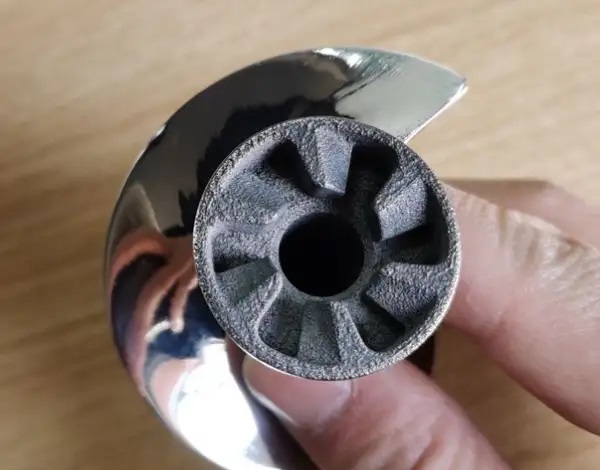Are you fascinated by the potential of 3D printing with titanium but puzzled about how to achieve that perfect, polished finish? You’re not alone. Many enthusiasts and professionals alike face the challenge of transforming their rough, freshly printed titanium parts into sleek, mirror-like masterpieces. Imagine holding a piece of titanium jewelry or a medical implant in your hand, its surface so smooth it reflects light like a mirror. This transformation is possible, and we’re here to reveal the process.
The Polishing Process Explained
Polishing 3D printed titanium involves several detailed steps to achieve a smooth and shiny finish. Here is a comprehensive guide:
- Initial Surface Preparation:
- Remove Support Structures: Begin by carefully removing any support structures from the 3D printed part using tools like pliers or cutters.
- Deburring: Use carbide burrs to eliminate sharp edges or burrs left from the printing process, creating a smoother initial surface.
- Surface Smoothing:
- Wet Tumbling: Utilize a wet tumbling process with ceramic media to smooth the surface. This step can take several hours and helps in achieving a relatively smooth, matte finish. Angle-cut triangle shapes are particularly effective for reaching corners and edges.
- Dry Tumbling: Follow with dry tumbling using fine premium treated tumbling media containing polishing agents and lubricants. This step burnishes the surface, resulting in a clean and bright finish.
- Polishing Process:
- Diamond Compounds: Apply diamond compounds of varying micron sizes (e.g., 25 micron and 10 micron) to further refine the surface. Ensure the surface is flat and smooth before proceeding to finer compounds.
- Polishing Mops: Use mounted loosefold calico polishing mops with a 3 micron diamond compound for detailed polishing. These mops are flexible and suitable for curved forms, providing an excellent soft grade for a final finish.
- Final Steps:
- Electropolishing: For a high-quality finish, consider electropolishing. This process uses an electric current to remove material from the part, smoothing and brightening the surface, particularly effective for achieving a mirror-like finish.
- Cleaning: Finish the polishing process with a solvent cleaner to remove any compound residue, ensuring a clean and polished final product.
- Safety Considerations:
- Adequate Extraction: Ensure proper ventilation or extraction systems are in place, as titanium can spark when it gets too hot, preventing fire hazards.
- Personal Protective Equipment (PPE): Always wear masks and eye protection during the polishing process to protect against dust and debris.

The Necessity and Challenges of Polishing Titanium
Does titanium need to be polished? Yes, titanium often requires polishing to enhance both its aesthetic appeal and functional properties. Polishing helps in achieving a smoother surface, which is critical for applications like jewelry, medical implants, and aerospace components where surface finish is paramount.
What are the most common challenges when polishing 3D printed titanium? Polishing titanium can be challenging due to its hardness and the presence of support structures or residual powder from the printing process. Achieving a uniform surface finish without introducing scratches or unevenness requires careful selection of tools and techniques.
Can you 3D print titanium alloy?
Yes, titanium alloys can be 3D printed using various metal additive manufacturing techniques. Here are the key points about 3D printing titanium alloys:
- Common Titanium Alloys: The most frequently 3D printed titanium alloy is Ti-6Al-4V (also known as Ti64 or Grade 5), which offers excellent strength-to-weight ratio and corrosion resistance.
- Printing Technologies: Titanium alloys are typically printed using powder bed fusion methods like Direct Metal Laser Sintering (DMLS) or Selective Laser Melting (SLM).
- Properties: 3D printed titanium parts can achieve mechanical properties comparable to wrought titanium, including high tensile strength, yield strength, and elongation.
- Applications: 3D printed titanium is used in aerospace, automotive, medical, and industrial applications due to its lightweight nature, high strength, and biocompatibility.
- Advantages: 3D printing allows for complex geometries and internal structures that would be difficult or impossible to achieve with traditional manufacturing methods.
- Challenges: Titanium is reactive when heated, requiring careful control of the printing environment to prevent oxidation. The high reflectivity of titanium powder can also pose challenges for laser-based printing methods.
- Post-processing: 3D printed titanium parts often undergo post-processing treatments like heat treatment or hot isostatic pressing (HIP) to optimize mechanical properties.
- Resolution: Depending on the printer and process used, feature sizes as small as 0.15-0.38 mm can be achieved.
- Surface Finish: As-printed titanium parts typically have a matte gray or slightly reflective satin finish, which can be further refined through polishing if needed.
- Cost: While the material itself is expensive, 3D printing can be cost-effective for complex parts or low-volume production compared to traditional manufacturing methods.
3D printing of titanium alloys has opened up new possibilities in various industries, allowing for the creation of lightweight, strong, and complex parts that were previously difficult or impossible to manufacture.

Conclusion
By following the detailed steps of surface preparation, smoothing, polishing, and final cleaning, you can achieve a stunning, polished finish on 3D printed titanium parts. While the process may be intricate and demanding, the results are undeniably worth the effort. Whether for jewelry, medical devices, or aerospace components, polished titanium not only looks impressive but also performs exceptionally well. Embrace the potential of 3D printing with titanium, and unlock new possibilities in your creations.

